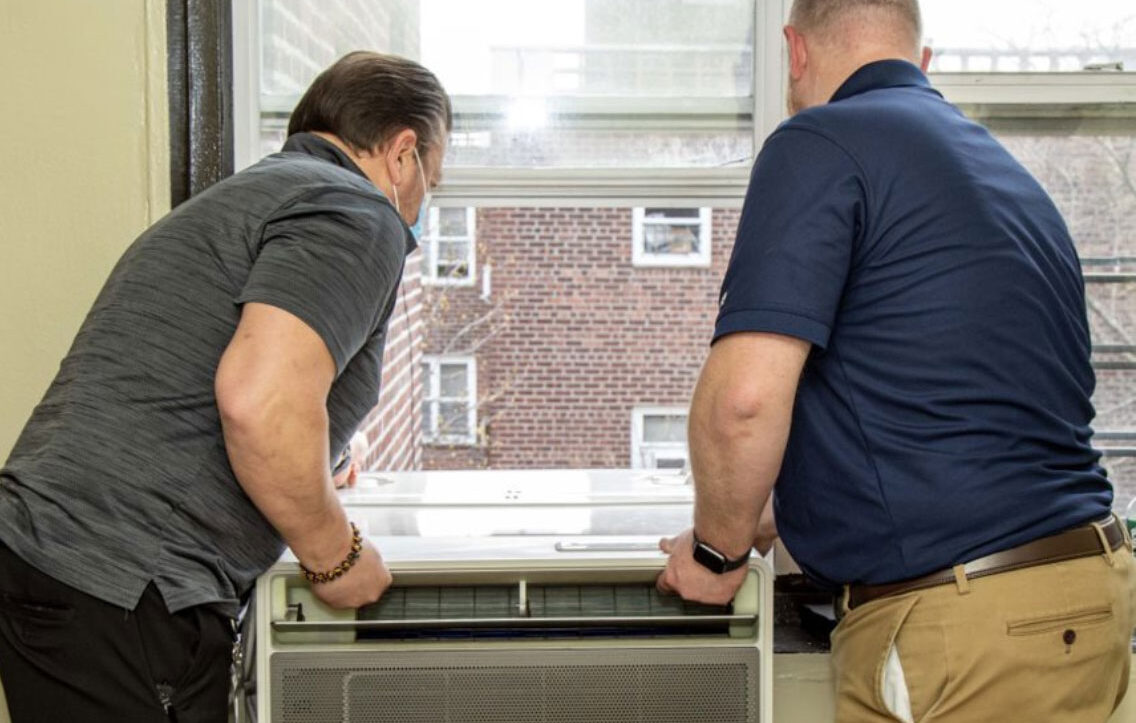Description
- Energy is essential for NYCHA developments/buildings because it’s used for a variety of purposes, including heating, cooling, lighting, and powering appliances and electronics. With the climate change and energy crisis being an imminent reality, the need to provide energy-efficient building designs becomes more important. An energy-efficient building keeps the building fully functional and thermally comfortable for its occupants as well. Energy-efficient buildings reduce energy costs, combat climate change, create comfortable living conditions, and help tackle global warming. Scope of energy-efficient buildings balances all aspects of energy use in a building by providing an optimized mix of passive solar–design strategies, energy-efficient equipment and system, and renewable sources of energy.
- Projects in this scope area may include: replacing common area and apartment lighting with new, high-efficient LEDs; installing apartment temperature sensors for heating/cooling control; steam distribution system repairs and pipe insulation; installing low-flow water fixtures including showerheads and faucet aerators; installing new exterior windows, doors, cladding, weather sealing, insulation, and materials for building enclosure; installing solar panels; and upgrading central ventilation system by performing cleaning, sealing and balancing. The full, detailed scope of work for these projects including any additional work areas will be updated here after alignment with project stakeholders through scoping and design activities.
Baseline
- NYCHA’s water conserving standards match citywide standards for plumbing fixtures of affordable housing.
- Comply with PACT EGC Criteria 4.1 Water Conserving Fixtures
- Comply with PACT EGC Criteria 4.2 Advanced Water Conservation, when feasible
- Comply with PACT EGC Criteria 3.3 Ecosystem Services/Landscape, to conserve water used for irrigation.
- Comply with PACT EGC Criteria 3.5 Surface Stormwater Management, to retain on 1” of site precipitation.
- Conserve electricity by
specifying High-efficiency equipment.
- Comply with PACT EGC Criteria 5.7 Energy Star Appliances for clothes washers, dishwashers, refrigerators, ovens, and cooktops.
- Save electrical energy by proposing high-efficient bulb LEDs.
- Ensuring there are no air leaks.
- Using sensors or timers to ensure the building isn’t operating when vacant.
- Plan to stop and prevent building plumbing systems leakage to conserve water.
- Water inefficiencies can occur in heating systems.
- Sub-meter make-up water usage and connect to BMS to monitor both boilers make up water, condensate tanks, and pumps to identify leaks and quickly repair them.
- Plan to stop leaks at building envelope to prevent mold.
- Comply with PACT EGC Criteria 6.8 Managing Moisture: Foundation by installing capillary breaks and vapor retarders that meet specified criteria appropriate for the foundation type.
- Comply with PACT EGC Criteria 6.9 Managing Moisture: Roofing and Wall Systems by providing water drainage away from walls, windows, and roofs.
Stretch
- Install Wireless Water leak detection meter on the ultra-high efficiency toilets to monitor and collect water usage data. Review results of NYCHA’s completed water monitoring study.
- Comply with PACT EGC Criteria 4.3 Monitoring Water Consumption and leaks.
- Determine applicability for implementing NYCHA’s test use of cured in place pipe (CIPP) technology that can be used to rehabilitate existing pipes to reduce holes, breaks, and joint failures.
- Determine applicability for implementing joint NYCHA and DEP scalable water reclamation and for grey water and rainwater re-use strategies such as:
- Steam condensate recycling in heating systems.
- Storm water reuse for irrigation of gardens or green spacesStrategy of using accumulated surface storm water or high ground water table for toilet flushing, based on Marcy House case study, to reduce potable water use.
- Comply with PACT EGC Criteria 4.6 Non-Potable Water Re-use.
Strategies
![Optimize Performance, Operation & Maintenance of Buildings, Systems & Assets]()
Optimize Performance, Operation & Maintenance of Buildings, Systems & Assets
![Prioritize Sustainable Materials, Technologies & Practices]()
Prioritize Sustainable Materials, Technologies & Practices
PACTSustainability Agenda
Last Updated on October 10, 2024 at 1:59 pm
Specifications
08 71 30 Thresholds, Weatherstripping, and Seals
22 40 00 Plumbing Fixtures























